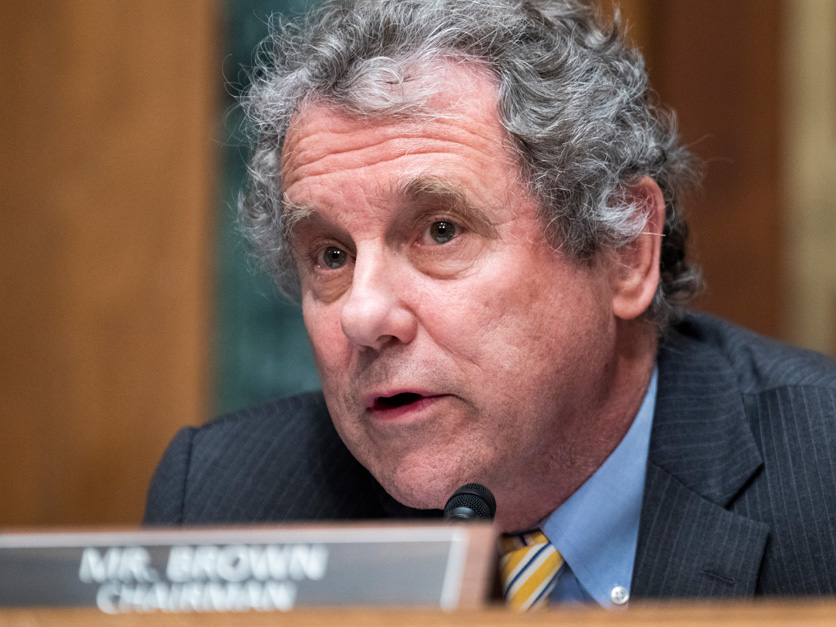Senate Agriculture Committee member Sherrod Brown, D-Ohio, and a bipartisan group of House members are proposing to revive a $5-per-acre subsidy program for cover crops that USDA offered for two years using pandemic assistance funding.
As with the temporary program, the proposed payments would work as subsidies for crop insurance premiums.
The House version of Brown's COVER Act is co-sponsored by Reps. Sean Casten, D-Ill., Elissa Slotkin, D-Mich., and Mike Bost, R-Ill. The proposal is intended to be included in the next farm bill.
The Biden administration's temporary payment program for 2021 and 2022 was modeled after state programs in Iowa, Illinois and Indiana — Midwest states where cover crops are very relevant. President Biden’s fiscal 2024 budget also proposed to reinstate the $5 per acre cover crop subsidy.
“Farmers are the original conservationists. By utilizing cover crops, they can increase yield, decrease pesticide use, and reduce runoff into waterways,” Brown said in a news release.
Under the bill, qualifying cover crops include cereal, grass, legume, brassica, nonlegume broadleaf or “any combination thereof that is planted for conservation purposes.”
 Sen. Sherrod Brown, D-Ohio (Tom Williams/Pool via AP)
Sen. Sherrod Brown, D-Ohio (Tom Williams/Pool via AP)“The pandemic cover crop program was simple and popular among farmers, and it worked,” said Brown. “We need to make sure this vital program is included in the next farm bill.”
The cost of the program is estimated to be $60 million for fiscal year 2024 and would gradually increase to $84 million in 2028.
In addition to the $5 incentive paid to farmers, the bill would authorize funding for technical assistance in the Good Steward Cover Crop Program and create a Soil Health Pilot Program — where producers using “innovative” soil health practices could receive additional subsidies on their crop insurance.
Noting that he hadn’t had a chance to look at the proposal yet, House Agriculture Committee Chairman Glenn “GT” Thompson, R-Pa., told Agri-Pulse, “Five bucks an acre is not going to make a difference to a farmer.”
A 2022 analysis by the Practical Farmers of Iowa estimated the median cost of cover crop seed and application at $32 per acre. According to a 2019 Sustainable Agriculture Research and Education report on cover crops, the median cover crop seed cost is $25 per acre.
Thompson said cover crops generally are a “wonderful thing” but they don’t work everywhere.
“There are some places in this country that if you plant a cover crop you will suck every bit of moisture out of the ground and you'll never … you won't have any cash crop to produce to feed people,” Thompson said.
The bill has support from several farm organizations and food and beverage giant PepsiCo. The company is supporting a few of the USDA climate-smart commodities programs — with $215 million in funding — that promote practices like cover crops and others that can help improve soil health and water quality.
Don’t miss a beat! It’s easy to sign up for a FREE month of Agri-Pulse news! For the latest on what’s happening in Washington, D.C. and around the country in agriculture, just click here.
Cover crops are a regionally specific soil health practice. They are less relevant to western growers where water conservation is paramount. Environmental groups and advocates have concerns about overemphasizing one practice through federal legislation, instead of promoting a holistic soil health approach.
Neither the Senate or House bills provide a way to fund the payments.
Some ag and conservation groups are concerned the proposal doesn’t do enough to bring new farmers into the fold and that it will largely benefit big commodity growers with existing crop insurance.
Ag policy consultant Ferd Hoefner told Agri-Pulse he’d rather see more funding go toward existing farm bill conservation programs like the Conservation Stewardship Program and Environmental Quality Incentives Program, which promote cover crops in addition to a suite of regionally specific soil health practices.
He said the COVER Act is too simple a solution to a complex issue.
“What we really need is not a premium subsidy for this or that,” Hoefner said.
“What we need is for crop insurance to recognize the value of conservation systems in reducing risk and therefore changing the rating structure for crop insurance so that it fully recognizes the risk reduction benefits of conservation systems,” Hoefner said.
This story has been updated to clarify the Practical Farmers of Iowa study and its assessment of seed and application of cover crops rather than full cust of implementation.
For more news, go to www.Agri-Pulse.com.


